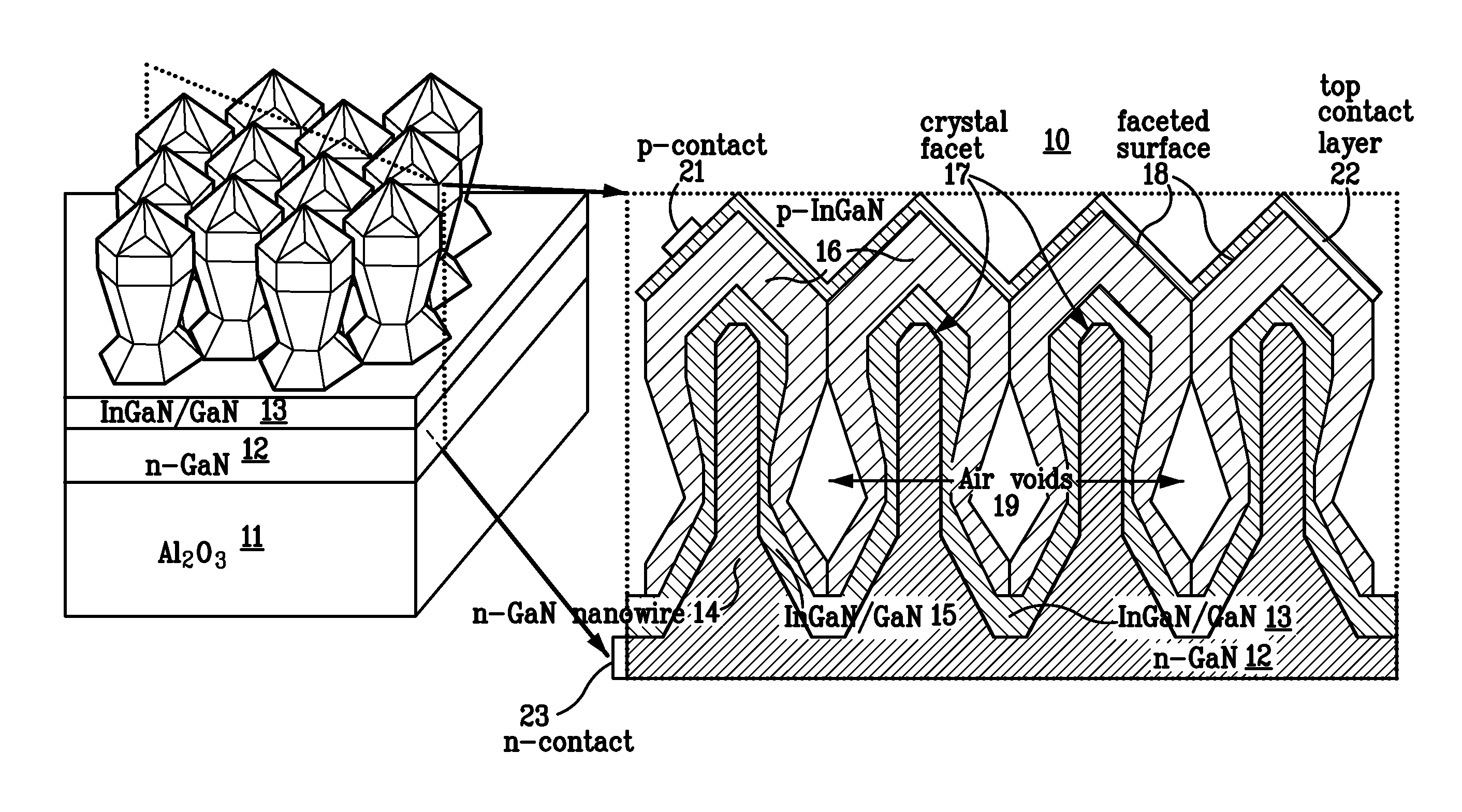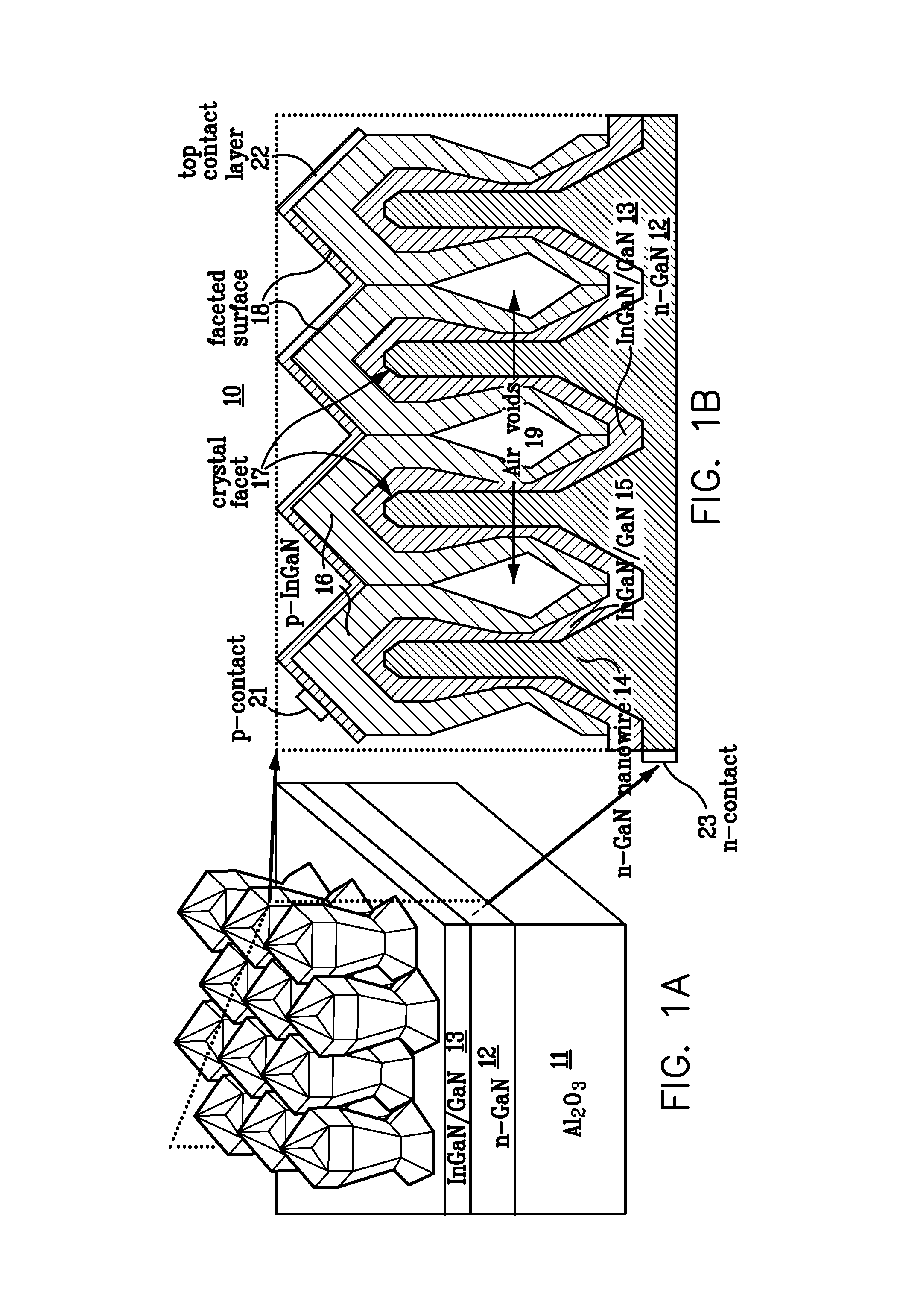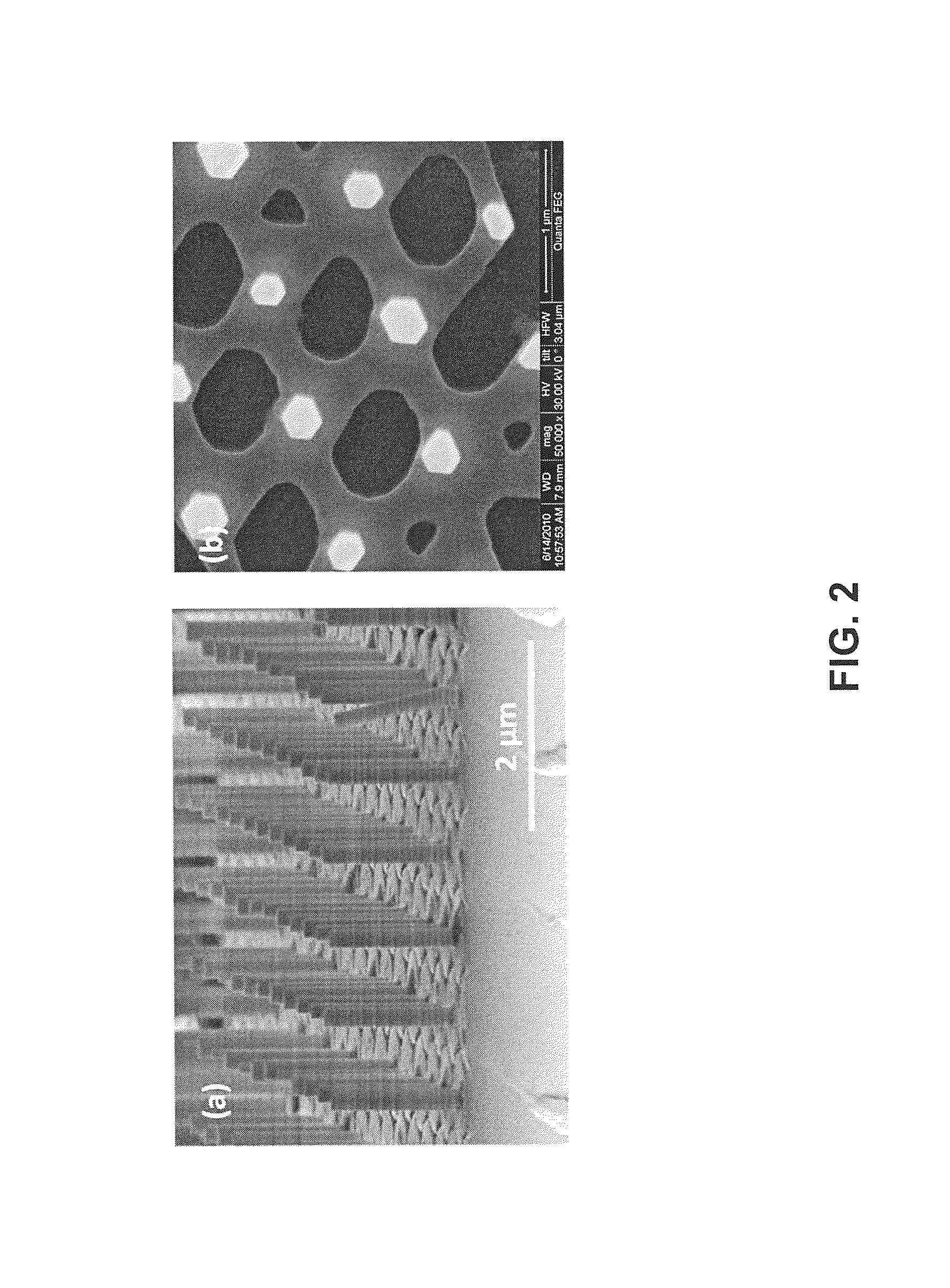Amber light-emitting diode comprising a group III-nitride nanowire active region
a light-emitting diode and amber technology, applied in the field of temperature stable amber light-emitting diodes, can solve the problems of significant stokes loss, decreased led efficiency, and inability to achieve significant stokes loss, high indium content, and high material quality
- Summary
- Abstract
- Description
- Claims
- Application Information
AI Technical Summary
Benefits of technology
Problems solved by technology
Method used
Image
Examples
Embodiment Construction
[0016]According to the present invention, amber LEDs (˜585 nm) with high efficiencies and high temperature stability based on the InGaN materials system can be fabricated by employing a novel three-dimensional, hybrid core-shell device structure. In this structure, the active emitter MQW regions are grown on a high quality nanowire template, while a top coalesced p-type (In)GaN layer enables standard planar device processing. The nanowire architecture allows for growth of higher indium content InGaN layers than is possible in standard planar InGaN / GaN film heterostructures, due to the unique ability of nanowires to accommodate lattice mismatch strain owing to their large free surface area and nanoscale dimensions. See T. Kuykendall et al., Nature Mater. 6, 951 (2007); and Q. M. Li and G. T. Wang, Appl. Phys. Lett. 97, 181107 (2010). While indium concentrations greater than ˜20% in planar InGaN on GaN material lead to a significant degradation in the material and hence optical qualit...
PUM
| Property | Measurement | Unit |
|---|---|---|
| wavelength | aaaaa | aaaaa |
| wavelength | aaaaa | aaaaa |
| height | aaaaa | aaaaa |
Abstract
Description
Claims
Application Information
 Login to View More
Login to View More - R&D
- Intellectual Property
- Life Sciences
- Materials
- Tech Scout
- Unparalleled Data Quality
- Higher Quality Content
- 60% Fewer Hallucinations
Browse by: Latest US Patents, China's latest patents, Technical Efficacy Thesaurus, Application Domain, Technology Topic, Popular Technical Reports.
© 2025 PatSnap. All rights reserved.Legal|Privacy policy|Modern Slavery Act Transparency Statement|Sitemap|About US| Contact US: help@patsnap.com



